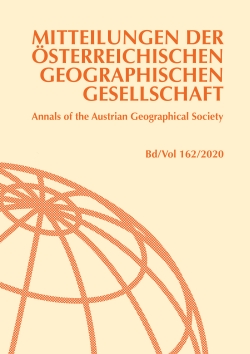Transforming Metropolitan Regions – Evidence from Belgrade
Zora Živanović , Branka Tošić, Dragica Gatarić
Mitteilungen der Österreichischen Geographischen Gesellschaft Band 162/2020, pp. 439-468, 2021/03/30
Band 162 (Jahresband), Wien 2020
Volume 162 (Annual volume), Vienna 2020
doi: 10.1553/moegg162s439
doi: 10.1553/moegg162s439

The paper seeks to identify and assess the polarising, indirect and direct favourable influence of Belgrade, as the capital and the largest city in Serbia, in the development of settlements and centres within its administrative area, i.e. the territory administratively named the City of Belgrade. The paper includes an analysis of demographic trends, including commuting trends, and the functional and morphological changes in the settlements of the Belgrade region between 1971 and 2011. Various analytical and synthetic methods have been used to assess the investigated territory’s degree of transformation, including both positive effects and the negative consequences of the impact of various factors. Suburban areas are not clearly delimited. Belgrade’s urban area is not marked by social segregation. The initial hypothesis that the Belgrade region underwent a complex and multifaceted transformation has been confirmed, which will significantly determine future planning solutions, especially as regards the identified causes of the transformation, the factors of which have not been significantly changed in the transition, post-socialist period. The appropriateness of development planning measures and governing policies in this area is of crucial importance for the country as a whole.
Keywords: Transformation processes, favourable impact, environment, demographic trends, settlement changes, planning measures, governing policies, metropolitan region, Belgrade


